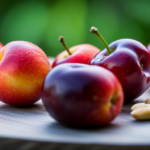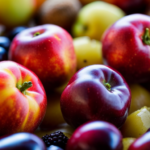Getting Started with Raw Food
Raw Food Exposed To Toxins Is What?

Eating raw food that has been contaminated with toxins is the ultimate example of culinary irony. It’s akin to a cruel illusion, where something that is supposed to be pure and healthy instead becomes harmful and unsafe.
We often associate raw food with vitality and goodness, but little do we realize the potential dangers lurking within. In this article, I will shed light on the hidden perils of consuming contaminated raw food. From the various types of toxins that can infiltrate our meals to the severe health risks they pose, we will explore the dark side of what should be a nourishing experience.
We will delve into the common sources of toxins in raw food, how they enter the food supply chain, and the detrimental effects they have on the nutritional value of our meals. Additionally, I will discuss the signs and symptoms of foodborne illness caused by toxin contamination, along with proper handling and storage practices to ensure our safety.
It’s time to uncover the truth and raise awareness about the inherent risks associated with raw food exposed to toxins.
Types of Toxins that Can Contaminate Raw Food
You need to be aware of the types of toxins that can contaminate your raw food. Understanding these toxins and their health effects is crucial for ensuring the safety of your diet.
There are various types of toxins that can contaminate raw food, including bacterial toxins, chemical toxins, and environmental toxins.
Bacterial toxins are produced by harmful bacteria such as Salmonella and E. coli. These toxins can cause severe gastrointestinal illnesses, leading to symptoms like vomiting, diarrhea, and abdominal pain.
Chemical toxins, on the other hand, can be introduced to raw food through pesticides, heavy metals, or food additives. These toxins have been linked to various health problems, including cancer, organ damage, and developmental issues.
Lastly, environmental toxins can contaminate raw food through air, water, or soil pollution. These toxins, such as dioxins and PCBs, can accumulate in the tissues of animals and plants, posing serious health risks when consumed.
Prevention methods, such as proper food handling and storage, thorough washing of fruits and vegetables, and choosing organic produce, can help minimize the risk of contamination.
Understanding the types of toxins that can contaminate raw food is essential for protecting your health.
In the next section, we will explore the health risks associated with consuming contaminated raw food.
Health Risks Associated with Consuming Contaminated Raw Food
Consuming contaminated raw food can pose significant health risks. There are various types of foodborne illnesses that can result from consuming raw food that has been exposed to toxins. These illnesses can range from mild gastrointestinal discomfort to severe and life-threatening conditions. It is crucial to understand the importance of proper food handling to minimize the risk of consuming contaminated raw food.
To illustrate the potential health risks associated with consuming contaminated raw food, consider the following table:
| Foodborne Illness | Symptoms |
|---|---|
| Salmonella | Diarrhea, fever, abdominal cramps |
| E. coli | Severe abdominal pain, bloody diarrhea |
| Campylobacter | Diarrhea (sometimes bloody), fever, abdominal pain |
Proper food handling practices are essential to prevent the contamination of raw food. This includes washing hands thoroughly, using separate cutting boards for raw and cooked food, and storing raw food at the correct temperature. By following these guidelines, the risk of consuming contaminated raw food can be significantly reduced.
In the subsequent section, we will explore common sources of toxins in raw food and discuss ways to mitigate these risks. Understanding how toxins can contaminate raw food is crucial for ensuring food safety and preventing foodborne illnesses.
Common Sources of Toxins in Raw Food
To ensure food safety, it’s important to understand the common sources of toxins found in uncooked meals. Raw food can be exposed to toxins through various means, including environmental contamination and improper handling and storage practices.
The common sources of toxins in raw food include:
-
Environmental Contamination:
- Pesticides: These chemicals are used in agriculture to control pests and can contaminate raw fruits and vegetables.
- Heavy metals: Soil pollution and industrial activities can lead to the accumulation of heavy metals in raw food, such as mercury in fish.
-
Improper Handling and Storage:
- Cross-contamination: Raw food can become contaminated when it comes into contact with surfaces or utensils that have been in contact with raw meat or poultry.
- Temperature abuse: Raw food should be stored at the proper temperature to prevent the growth of bacteria and other harmful microorganisms.
Prevention measures can be taken to reduce the risk of toxin exposure in raw food. These include washing fruits and vegetables thoroughly, choosing organic produce when possible, and practicing proper food handling and storage techniques.
Understanding the common sources of toxins in raw food is crucial in minimizing the potential health risks associated with their consumption. In the next section, we’ll explore how toxins can enter the food supply chain, providing further insights into the importance of food safety practices.
How Toxins Can Enter the Food Supply Chain
When it comes to the food supply chain, toxins can find their way in through various pathways. Toxin contamination prevention is crucial in ensuring food safety practices.
One common pathway for toxins to enter the supply chain is through contaminated water used to irrigate crops or wash produce. This can happen when water sources are polluted with chemicals or bacteria, which then transfer to the raw food.
Another pathway is through the use of pesticides and fertilizers during the cultivation process. If not used properly or in excessive amounts, these chemicals can accumulate in the food and pose a risk to consumers.
Additionally, toxins can also be introduced during the processing and packaging stages of food production. Contaminated equipment or improper handling can lead to cross-contamination and the presence of toxins in the final product.
It is essential to implement stringent quality control measures and adhere to proper food safety protocols to minimize the risk of toxin contamination. Regular testing of raw food for toxins, along with proper sanitation and hygiene practices, can help prevent the entry of toxins into the food supply chain.
By prioritizing food safety, we can ensure that the raw food we consume retains its nutritional value and is free from harmful contaminants.
Effects of Toxins on the Nutritional Value of Raw Food
Toxins can seriously compromise the nutritional value of the fresh ingredients you rely on for a healthy diet, leaving you with a bitter taste in your mouth.
One way in which toxins can infiltrate raw food is through the use of pesticides. Pesticides are chemicals that are commonly sprayed on crops to control pests and increase yield. However, these chemicals can have detrimental effects on the nutritional content of the produce. Studies have shown that exposure to pesticides can lead to a decrease in essential nutrients such as vitamins, minerals, and antioxidants.
Additionally, the toxicity of pesticides can have a significant impact on organic farming. Organic farming aims to minimize the use of synthetic chemicals and promote sustainable agricultural practices. However, the presence of toxins in the environment can still pose a threat to organic crops.
This highlights the importance of finding ways to minimize the risk of toxic exposure in raw food. By implementing proper farming practices and utilizing natural alternatives to pesticides, we can help ensure that the nutritional value of raw food remains intact and safe for consumption.
Moving forward, let’s explore some effective strategies to reduce the risk of toxic exposure in raw food.
Ways to Minimize the Risk of Toxic Exposure in Raw Food
One way you can ensure the safety and quality of your fresh ingredients is by implementing effective strategies to minimize the risk of toxic exposure in the natural produce you consume. To achieve this, it’s essential to follow food safety guidelines and adopt best practices.
Here are three strategies to help minimize the risks:
-
Proper handling and storage: Ensure that raw food is stored at appropriate temperatures to prevent bacterial growth. Refrigerate perishable items promptly and avoid cross-contamination by storing raw meats separately from other foods.
-
Thoroughly wash and clean: Before consuming raw fruits and vegetables, it’s crucial to wash them thoroughly under running water to remove any dirt, bacteria, or pesticide residues. Scrub firm produce with a brush to remove any stubborn debris.
-
Choose organic and locally sourced produce: Opting for organic produce can reduce the risk of exposure to toxins such as pesticides and chemical fertilizers. Buying from local farmers’ markets ensures freshness and minimizes the time between harvest and consumption.
By following these strategies, you can minimize the risk of toxic exposure in your raw food. This helps to maintain the nutritional value and overall quality of the ingredients you consume.
Transitioning into the subsequent section about the signs and symptoms of foodborne illness from toxin contamination, it’s important to be aware of the potential risks associated with consuming contaminated food.
Signs and Symptoms of Foodborne Illness from Toxin Contamination
Consuming contaminated food can make you feel under the weather, but it’s important to be aware of the telltale signs and symptoms of foodborne illness. Toxins in raw food can lead to foodborne illnesses, which are often characterized by gastrointestinal symptoms such as nausea, vomiting, diarrhea, and abdominal pain. In some cases, symptoms may also include fever, muscle aches, and headache. These symptoms usually appear within a few hours to a few days after consuming contaminated food.
Early detection and treatment are crucial in managing foodborne illnesses. If you experience any of these symptoms after consuming raw food, it’s important to seek medical attention promptly. Your healthcare provider can perform tests to determine the cause of your illness and provide appropriate treatment. In severe cases, hospitalization may be necessary to ensure proper care and hydration.
To prevent contamination, it is essential to follow proper handling and storage practices for raw food. This includes washing fruits and vegetables thoroughly, separating raw meats from other foods, cooking food to the appropriate temperature, and refrigerating perishable items promptly. By taking these precautions, you can minimize the risk of toxin contamination in raw food and reduce the likelihood of foodborne illnesses. Transitioning into the subsequent section about proper handling and storage practices for raw food, it is important to emphasize the importance of these practices in maintaining food safety.
Proper Handling and Storage Practices for Raw Food
After discussing the signs and symptoms of foodborne illness from toxin contamination, it’s crucial to understand the importance of proper handling and storage practices for raw food. By following these practices, we can reduce the risk of exposing raw food to toxins.
To begin, proper handling of raw food involves washing hands thoroughly before and after handling food, as well as using separate cutting boards and utensils for raw and cooked foods. Additionally, it’s important to avoid cross-contamination by keeping raw meats away from other foods.
Proper storage is equally important in preventing toxin contamination. Raw food should be stored at the appropriate temperature to inhibit the growth of bacteria and other pathogens. Refrigeration at temperatures below 40°F (4°C) is essential for perishable raw foods, while frozen foods should be kept at 0°F (-18°C) or below. It’s also crucial to store raw food in sealed containers to prevent any potential contamination from other foods in the refrigerator or freezer.
By implementing these proper handling and storage practices, we can significantly reduce the risk of toxins contaminating raw food. As we delve into the next section on government regulations and safety standards for raw food, we’ll explore how these practices align with established guidelines.
Government Regulations and Safety Standards for Raw Food
To ensure the safety of the public, government regulations and safety standards dictate the proper handling and storage practices for raw food. These regulations aim to minimize the risk of contamination and ensure that the food remains safe for consumption.
Government agencies, such as the Food and Drug Administration (FDA) in the United States, have established guidelines that food establishments must follow to maintain food safety.
Government regulations require that raw food be stored at appropriate temperatures to prevent the growth of harmful bacteria. For example, perishable foods like meat and poultry must be kept at or below 40°F (4°C) to slow down bacterial growth. Additionally, these regulations outline proper handling practices, such as using separate cutting boards and utensils for raw and cooked foods to avoid cross-contamination.
Food safety standards set by governments also include guidelines for labeling, packaging, and transportation of raw food. These standards help ensure that the food is accurately labeled with information about its origin, ingredients, and potential allergens. Proper packaging and transportation practices prevent physical damage, spoilage, and contamination during transit.
Government regulations and food safety standards play a crucial role in safeguarding the public from the risks associated with consuming raw food. By following these regulations, food establishments can help reduce the likelihood of foodborne illnesses and ensure that consumers have access to safe and wholesome food.
Transitioning into the next section, it’s important to understand the significance of food safety education and awareness to further enhance the overall safety of the food supply chain.
The Importance of Food Safety Education and Awareness
As we discussed in the previous subtopic, government regulations and safety standards play a crucial role in ensuring the safety of raw food. However, it is equally important for individuals to have a deep understanding of food safety and the potential risks associated with consuming raw food. This is where food safety education and awareness come into the picture.
The importance of food safety education cannot be overstated. By providing individuals with the knowledge and skills necessary to handle, prepare, and store food safely, we can significantly reduce the risk of foodborne illnesses. Moreover, raising awareness about food safety can help people make informed choices when it comes to selecting and consuming raw food.
To highlight the significance of food safety education and awareness, let’s take a closer look at the following table:
| Benefits of Food Safety Education |
|---|
| 1. Reduces the risk of foodborne illnesses |
| 2. Promotes safe food handling practices |
| 3. Enhances food quality and freshness |
| 4. Protects vulnerable populations, such as children and the elderly |
By disseminating accurate information and promoting best practices, we can empower individuals to protect themselves and their loved ones from the potential dangers of consuming raw food. Let’s dive deeper into the importance of food safety education and raising awareness about food safety.
Frequently Asked Questions
What are the different types of toxins that can contaminate raw food?
When it comes to raw food, there are various types of toxins that can pose serious health risks. These toxins can include bacteria like Salmonella and E. coli, as well as viruses and parasites.
Chemical contaminants such as pesticides, heavy metals, and toxins from environmental pollution can also contaminate raw food. Consuming these toxins can lead to foodborne illnesses, gastrointestinal issues, and even long-term health complications.
It’s important to handle and prepare raw food properly to minimize the risk of toxin exposure.
Are there any long-term health risks associated with consuming contaminated raw food?
Long-term consumption of contaminated raw food can have significant health implications. Exposure to toxins through raw food can lead to a range of adverse effects, including chronic illnesses and compromised immune function. Studies have shown that certain toxins found in raw food, such as pesticides and heavy metals, can accumulate in the body over time and increase the risk of diseases like cancer, neurological disorders, and organ damage.
Therefore, it’s crucial to ensure the safety of raw food to minimize these long-term health risks.
Where do toxins commonly come from in raw food?
Toxins commonly come from a variety of sources in raw food. One common source is environmental contamination, such as pesticides and pollutants in the soil or water.
Another source is microbial contamination, which can occur during food production, handling, or storage.
To prevent toxin exposure, it’s crucial to practice good food safety measures, such as thorough washing and proper storage. Additionally, choosing organic produce and following proper cooking techniques can help reduce the risk of toxin ingestion.
How can toxins enter the food supply chain and contaminate raw food?
Toxins can enter the food supply chain and contaminate raw food through various routes. Food safety measures and prevention strategies are crucial in minimizing this risk.
Common sources of contamination include environmental pollution, improper handling and storage practices, use of contaminated water and soil, and cross-contamination during processing.
Implementing strict quality control protocols, regular testing for toxins, and maintaining hygiene practices can help prevent the entry of toxins into the food supply chain and safeguard raw food from contamination.
Do toxins affect the nutritional value of raw food?
Toxin exposure can have a detrimental impact on the nutritional value of raw food. When toxins infiltrate the food supply chain, they can lead to nutrient degradation, robbing the food of its essential elements.
This can result in a diminished nutritional profile, compromising the health benefits that raw food is renowned for. The presence of toxins not only jeopardizes our well-being but also underscores the importance of safeguarding our food from contamination.
How Can Exposure to Toxins and Radiation Affect Raw Food?
When it comes to raw food, it’s essential to consider the potential impact of radiation and toxins. The raw food blog archive radiation can shed light on the potential risks and provide valuable insights on how to minimize exposure. Being aware of these factors is crucial for maintaining a healthy raw food diet.
Conclusion
In conclusion, it’s truly fascinating how raw food, touted as a healthy choice, can ironically become a breeding ground for toxins. From the very sources that nourish us, these toxins infiltrate our food supply chain, compromising its nutritional value.
The consequences of consuming contaminated raw food can result in severe health risks and foodborne illnesses. It’s imperative that we prioritize food safety education and awareness to ensure proper handling and storage practices.
By adhering to government regulations and safety standards, we can strive towards a safer and toxin-free raw food consumption experience.
With her ability to convey complex concepts in a clear and accessible manner, Belinda ensures that readers of all backgrounds can grasp the benefits and techniques of raw food. She excels at breaking down scientific information into digestible pieces, allowing readers to understand the impact of raw food on their bodies and encouraging them to make informed choices about their diet.
One of Belinda’s notable contributions to rachaelsrawfood.com is her collection of mouthwatering recipes. She delights in experimenting with various combinations of raw ingredients, exploring innovative ways to create delicious and nutritious meals. Belinda’s recipes showcase the incredible flavors and textures of raw food and emphasize its versatility, dispelling any misconception that a raw food diet is limited or monotonous.
In addition to her writing responsibilities, Belinda actively engages with the raw food community, attending workshops, seminars, and conferences to expand her knowledge and network. She enjoys connecting with like-minded individuals, exchanging ideas, and staying up to date with the latest trends and advancements in the field of raw food nutrition.
Getting Started with Raw Food
Does Raw Food Make Dogs Constipated? Find Out Here
Observe the signs of constipation in dogs on a raw food diet; discover how to ensure their digestive health. What solutions exist?
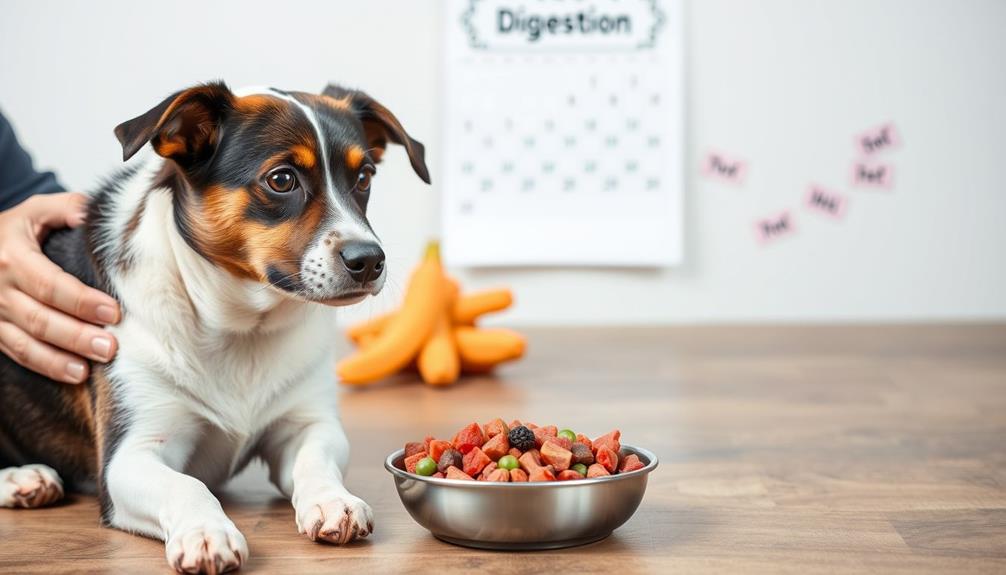
Feeding your dog a raw food diet can indeed cause constipation if it isn't balanced right. Excessive bone content might lead to hard stools, while not including enough fiber from fruits and vegetables can worsen the issue. Dehydration is also common with raw diets, contributing to stool hardness. If you notice signs like straining to defecate or rock-hard stools, it's important to adjust the diet. Adding fiber-rich foods like pumpkin and keeping your dog hydrated are key. There's more you can do to guarantee a healthy digestion for your dog, so keep exploring options for their diet.
Key Takeaways
- Raw diets can lead to constipation due to excessive bone content resulting in hard stools.
- Insufficient fiber from a lack of fruits and vegetables can exacerbate digestive issues.
- Dehydration is common in raw diets, which contributes to stool hardness.
- Rapid transitions to a raw diet without gradual adjustments may disrupt a dog's digestion.
- Regular monitoring of stool consistency and dietary balance is essential for preventing constipation.
Understanding Dog Constipation
Constipation in dogs can be a concerning issue for pet owners, and it's important to recognize the signs early. You might notice that your dog hasn't had a bowel movement for over 24 hours, is straining while trying to defecate, or producing rock-hard stools. These symptoms indicate that your dog's digestive tract needs attention.
Diet plays an essential role in your dog's bowel health, and understanding proper hamster care can help you appreciate the importance of nutrition in pet health. If your dog is on a raw diet, insufficient fiber and excessive bone content can contribute to constipation. It's crucial to provide enough fiber to help your dog maintain regular bowel movements. Foods like pumpkin and leafy greens can be excellent additions to their diet.
Additionally, keep an eye on your dog's hydration and make sure they get plenty of exercise. Both of these factors are significant for promoting healthy digestion and preventing constipation.
If you're concerned about your dog's condition, consider adjusting their diet by reducing bone content and incorporating fiber-rich foods. By taking these steps, you can help your dog overcome constipation and support their overall health.
Causes of Constipation in Raw Diets

A raw diet can sometimes lead to constipation in dogs, primarily due to excessive bone content. When the diet consists of too many bones, it can result in hard stools that hinder regular bowel movements.
Additionally, insufficient fiber intake from a lack of fruits and vegetables can exacerbate the problem. It's essential to incorporate fiber-rich foods like pumpkin and leafy greens to support healthy digestion, as recommended in gout nutrition guidelines.
Dehydration also plays a significant role in constipation. Since raw diets often contain less moisture than processed foods, your dog may not be drinking enough water, further contributing to hard stools.
Stress, changes in routine, or dietary imbalances can influence gut motility, leading to irregular bowel movements as well.
Moreover, if you shift your pet to a raw diet too quickly without a gradual introduction of new foods, it can disrupt their digestive system. This sudden change may result in constipation or other gastrointestinal issues.
To prevent these causes of constipation, verify that your dog's raw diet is balanced and includes sufficient fiber and hydration. This way, you can help maintain your dog's digestive health.
Signs and Symptoms to Observe

Recognizing the signs and symptoms of constipation in your dog is essential for timely intervention. Pay close attention to any lack of stool for over 24 hours, as this can be a clear indication that your dog is experiencing constipation.
If you notice your dog is straining during defecation, it's vital to take action. Straining often accompanies hard stools that resemble pebbles, signaling that your dog may be in discomfort. Additionally, providing your dog with healthy snacks can promote better digestion and overall health, potentially mitigating constipation issues.
Behavioral changes can also be significant. If your dog seems reluctant to move, avoids activities they usually enjoy, or shows signs of discomfort while attempting to relieve themselves, these may be warning signs of constipation.
It's important to monitor stool consistency regularly. Hard stools can lead to further complications, so keeping an eye on your dog's bathroom habits is key.
Dietary Adjustments for Relief
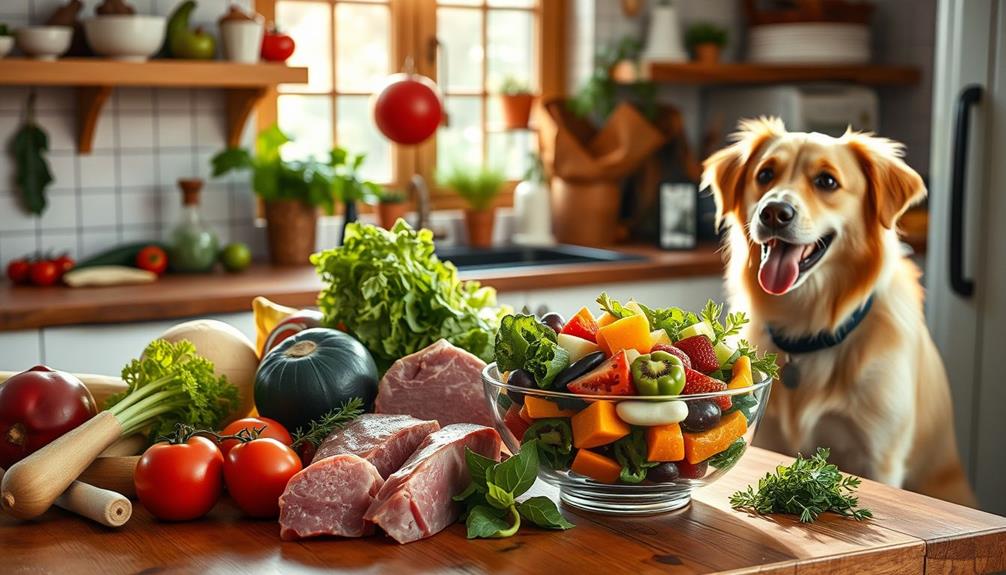
Making dietary adjustments can greatly help alleviate your dog's constipation. Start by reducing the frequency of raw meaty bones in their diet, as these can lead to drier, harder stools.
Instead, focus on incorporating extra fruits and vegetables, like pumpkin or leafy greens, which provide essential fiber that aids in regulating bowel movements. Additionally, guaranteeing proper hydration is vital; consider how air quality considerations can parallel maintaining your dog's overall health, including digestive wellness.
Feeding a balanced raw diet consisting of 80% muscle meat, 10% bone, and 10% offal guarantees your dog gets adequate moisture and nutrients, promoting healthy digestion.
Pureed pumpkin or canned unsweetened pumpkin can be particularly effective, thanks to its high fiber content, making it easier for your dog to defecate without straining.
Don't forget about hydration! Make sure your dog has access to fresh water or bone broth, as regular hydration is essential for maintaining stool consistency and preventing constipation.
By making these dietary adjustments, you'll create a more balanced raw food experience that supports your dog's digestive health and helps alleviate constipation.
Supplement Options for Digestive Health
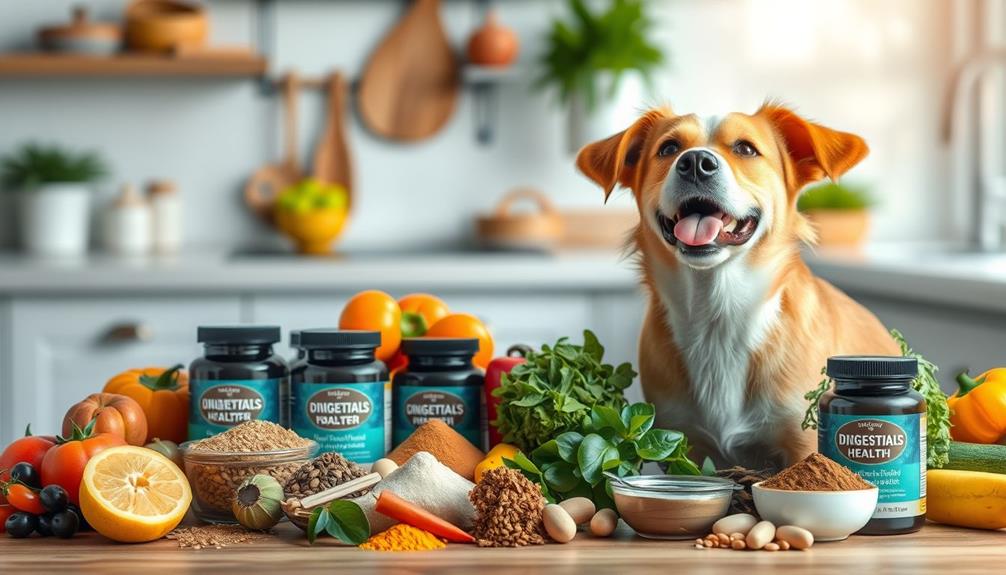
How can you enhance your dog's digestive health while minimizing constipation? Exploring effective supplement options can make a significant difference. Here are some to evaluate:
- Probiotics: These promote a diverse gut microbiome, which is essential for good digestion and can help mitigate issues such as gastrointestinal issues.
- Digestive enzymes: They help break down raw proteins and fats, improving nutrient absorption.
- Slippery elm: This natural remedy soothes the gastrointestinal tract and creates a protective mucous lining. A dosage of ¼ teaspoon per 10 lbs of body weight is recommended.
- Leafy greens: Incorporating fiber-rich foods like kale or spinach can regulate bowel movements, alleviating constipation.
- Omega-3 oil: Regular supplementation with this healthy oil supports overall digestive health and improves stool consistency.
When to Consult a Veterinarian
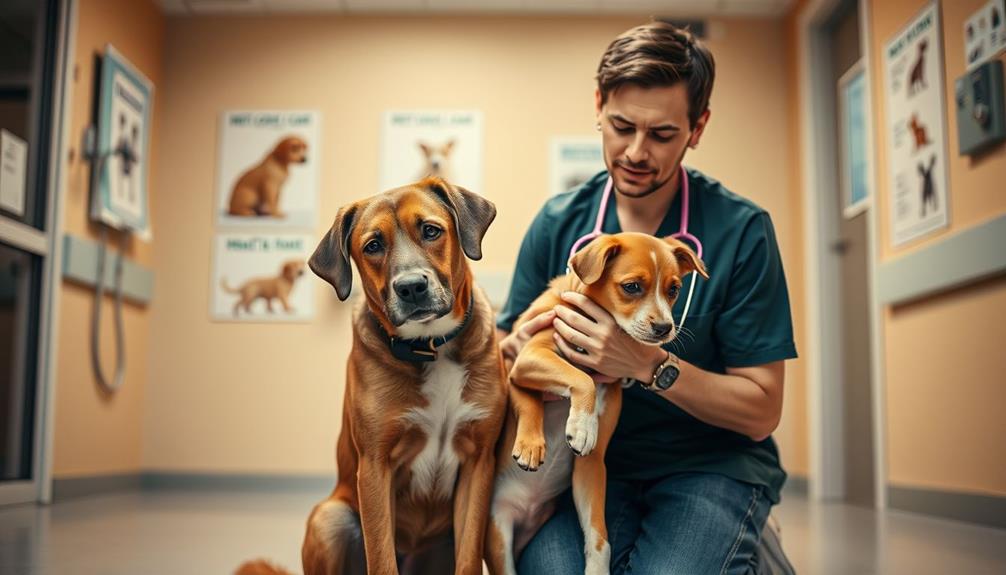
If your dog hasn't had a bowel movement in over 24 hours, it's time to consult a veterinarian.
It's important to keep an eye on your dog's overall behavior and health, as changes can indicate underlying issues that may require immediate attention.
Look out for persistent straining, discomfort, or any behavioral changes that indicate pain.
Addressing these signs early can help prevent more serious health issues down the line.
Additionally, emotional and psychological support available for families can be beneficial during such stressful times.
Persistent Lack of Stool
When your dog goes more than 24 hours without a stool, it's time to consult a veterinarian to rule out any serious health issues. A persistent lack of stool can indicate underlying problems that need addressing.
Here are some signs to watch for:
- Decreased energy levels or reluctance to move
- Hard, rock-like stools that signal constipation
- Straining to defecate with little or no output
- Signs of pain during attempts to relieve themselves
- Changes in appetite or behavior, indicating discomfort
If your dog's raw food diet lacks fiber, it could cause constipation, leading to infrequent dogs' bowel movements. Adding vegetables such as spinach, carrots, and sweet potatoes to their diet can help increase the fiber content and improve their digestion. It is important to consult with a veterinarian before switching to raw dog food, as they can provide guidance on the best diet for your dog’s specific needs. In some cases, adding a fiber supplement may also be necessary to ensure your dog’s digestive health.
Creating a personal budget for your pet's dietary needs can guarantee they receive the right nutrients. Loose stools can also disrupt gut health, making it essential to maintain a balanced diet.
If you notice any of these symptoms, don't hesitate to seek veterinary advice. Early intervention is key to identifying and treating the root cause of your dog's persistent lack of stool.
Delaying could complicate the situation, so it's best to act promptly. Remember, your dog's well-being depends on your vigilance in recognizing these signs!
Straining and Discomfort Signs
Straining to defecate can be a clear sign that your dog is experiencing constipation, and it's important to recognize this symptom early.Breast cancer symptoms in dogs can sometimes mimic signs of discomfort, so it's vital to differentiate between the two. If you notice your dog straining excessively or having difficulty passing stool, it's necessary to consult a veterinarian, especially if this persists. Signs of discomfort, like whining or trembling while attempting to defecate, should prompt an immediate visit to the vet.
A lack of bowel movements for more than 24 hours is a significant indicator of constipation and requires professional evaluation to rule out any underlying issues. Additionally, if your dog produces rock-hard stool consistently, this often signifies constipation, and you should seek veterinary advice.
Keep an eye on any changes in your dog's behavior; decreased activity levels or reluctance to move may also signal discomfort related to being constipated.
Addressing these signs of discomfort promptly can help prevent more serious health problems down the line. Remember, when in doubt about your dog's bowel habits or overall well-being, don't hesitate to reach out for a veterinary consultation. Your dog's health and comfort should always come first.
Behavioral Changes and Pain
Recognizing behavioral changes in your dog can provide important clues about their health, especially regarding constipation.
Similar to individuals with BPD dynamics in relationships, dogs may exhibit changes in behavior when experiencing discomfort or pain. If your dog exhibits any of the following signs, it's time to reflect on a vet consultation:
- Reluctance to move or play
- Straining and difficulty when trying to defecate
- Whining or trembling during attempts to have a bowel movement
- Rock-hard stools that are difficult to pass
- An absence of bowel movements for more than 24 hours
These signs of pain and discomfort can indicate that your dog needs immediate attention.
Straining to defecate is a clear indicator of constipation, and if your pet struggles for over a day, it may suggest a more serious underlying issue. Obvious signs of distress during defecation, such as whining, should never be ignored.
If you notice any of these behavioral changes, don't hesitate to consult your vet.
Early intervention can prevent complications and guarantee your dog's digestive health is maintained.
Frequently Asked Questions
Is It Normal for Dogs to Poop Less on a Raw Diet?
It's normal for dogs to poop less on a raw diet. You'll notice smaller, firmer stools due to higher digestibility. Just keep an eye out for any signs of constipation or distress in your dog.
How Do You Soften a Dog's Poop on a Raw Diet?
Did you know that 60% of dog owners notice firmer stools on a raw diet? To soften your dog's poop, balance their meals, add fiber, guarantee hydration, and encourage daily exercise for ideal digestive health.
What Foods Cause Dogs to Be Constipated?
Certain foods can cause constipation in dogs. High bone content, low-fiber diets, dry kibble, excessive lean meats, and non-digestible items like toys can all contribute to hard stools. Guarantee a balanced diet to prevent this.
How Long Does It Take for a Dog to Digest Raw Food and Poop?
It usually takes your dog 12 to 24 hours to digest raw food, depending on their age and size. You might notice smaller, less frequent stools due to improved nutrient absorption from the diet.
Conclusion
To sum up, while a raw food diet can be beneficial for many dogs, it can also lead to constipation if not balanced properly. Keep an eye on your pup's signs and symptoms, and make dietary adjustments as needed. If the issue persists, don't hesitate to consult your veterinarian, who can help you navigate this digestive maze. Remember, with the right approach, you can keep your dog's tummy happier than a kid in a candy store!
With her ability to convey complex concepts in a clear and accessible manner, Belinda ensures that readers of all backgrounds can grasp the benefits and techniques of raw food. She excels at breaking down scientific information into digestible pieces, allowing readers to understand the impact of raw food on their bodies and encouraging them to make informed choices about their diet.
One of Belinda’s notable contributions to rachaelsrawfood.com is her collection of mouthwatering recipes. She delights in experimenting with various combinations of raw ingredients, exploring innovative ways to create delicious and nutritious meals. Belinda’s recipes showcase the incredible flavors and textures of raw food and emphasize its versatility, dispelling any misconception that a raw food diet is limited or monotonous.
In addition to her writing responsibilities, Belinda actively engages with the raw food community, attending workshops, seminars, and conferences to expand her knowledge and network. She enjoys connecting with like-minded individuals, exchanging ideas, and staying up to date with the latest trends and advancements in the field of raw food nutrition.
Getting Started with Raw Food
Why Is Raw Food Bad for Cats? Essential Information
Overlooking the dangers of raw food diets for cats can lead to serious health risks; discover what you need to know for your feline’s safety.

Feeding your cat a raw food diet can be risky due to harmful bacteria like Salmonella and E. coli, which can cause severe gastrointestinal issues such as vomiting and diarrhea. About 25% of raw pet food samples have tested positive for these pathogens. Additionally, raw diets often lack essential nutrients like taurine, which can lead to serious health problems over time. Contamination during preparation increases health risks not just for your cat but for humans as well. Safety practices are vital if you decide to go this route, but there are safer, balanced alternatives that might better meet your cat's needs.
Key Takeaways
- Raw food diets can expose cats to harmful pathogens like Salmonella and E. coli, posing health risks to both pets and humans.
- Nutritional deficiencies are common in raw diets, lacking essential nutrients necessary for a cat's overall health and development.
- Improper preparation and handling of raw food increase the risk of contamination, leading to severe gastrointestinal issues in cats.
- Cats can be asymptomatic carriers of pathogens, increasing the risk of transmitting infections to humans through raw food.
- High-quality commercial cat foods offer balanced nutrition and are safer alternatives, minimizing health risks associated with raw diets.
Health Risks of Raw Food
When considering a raw food diet for your cat, it's vital to understand the health risks involved. Raw food diets can carry significant contamination risks with harmful pathogens such as Salmonella and E. coli. Studies indicate that nearly 25% of raw pet food samples test positive for these bacteria. The CDC estimates that there are about 1.2 million annual cases of foodborne salmonellosis in the U.S., and your cat could act as an asymptomatic carrier, increasing the risk of human exposure.
Additionally, just as in financial planning for elderly care, understanding the long-term impact of dietary choices is important for maintaining overall health and well-being.
Moreover, Listeria monocytogenes, another pathogen found in raw diets, poses serious dangers, especially for vulnerable populations like pregnant women and newborns. Cats fed raw diets may experience gastrointestinal issues such as vomiting and diarrhea, which can lead to severe health consequences for both them and their human caregivers.
Veterinary organizations like the CDC and AVMA strongly advise against raw diets due to these health risks. They emphasize the importance of safe handling practices to minimize contamination, but even with precautions, the dangers of raw pet food remain significant.
Ultimately, you must weigh these risks carefully when considering your cat's diet.
Nutritional Concerns
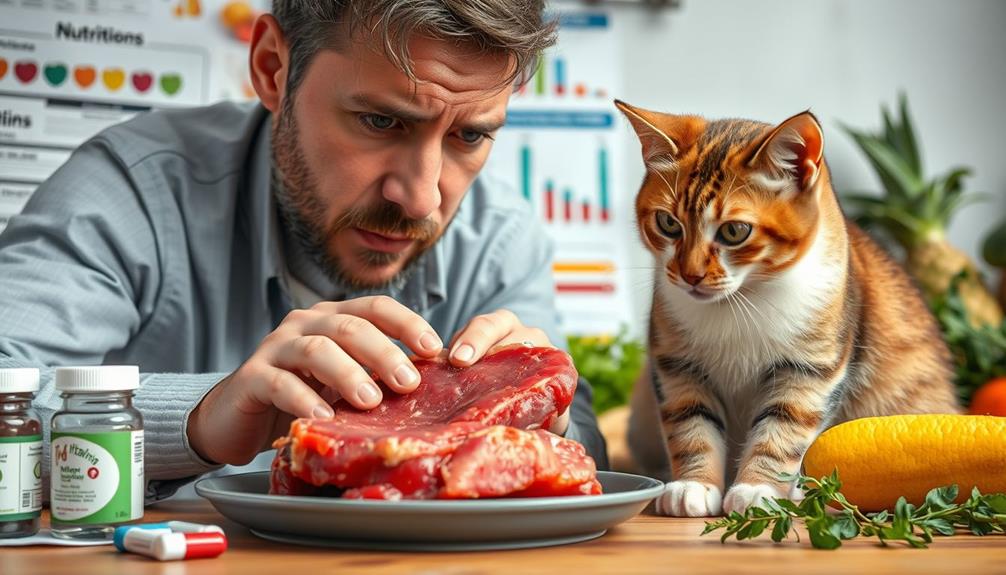
Cats thrive on balanced nutrition, but raw food diets often fall short in providing essential nutrients. Many raw food diets lack essential components like taurine, vitamins A, D, and E, which are critical for your cat's health. Without these essential nutrients, your feline friend could face serious nutritional deficiencies that lead to health issues over time.
Furthermore, it's important to understand the implications of dietary choices on overall health and wellness, as proper budgeting for pet care guarantees your cat receives the best nutrition possible.
Homemade raw diets frequently miss the mark on meeting complete and balanced nutritional requirements. This oversight can result in calcium imbalances, affecting bone health and overall development, particularly in growing cats. In adult cats, these imbalances can also lead to significant health concerns.
Additionally, without veterinary guidance, feeding your cat a raw food diet can be risky. Only a small percentage of analyzed homemade raw diets have been found to be complete and balanced. The potential for harmful bacteria in raw diets can further complicate nutritional adequacy, as it may contribute to nutrient loss.
To guarantee your cat receives the balanced diet they need, consult with a veterinarian before making any changes to their diet, especially if you're considering raw food options.
Pathogen Contamination
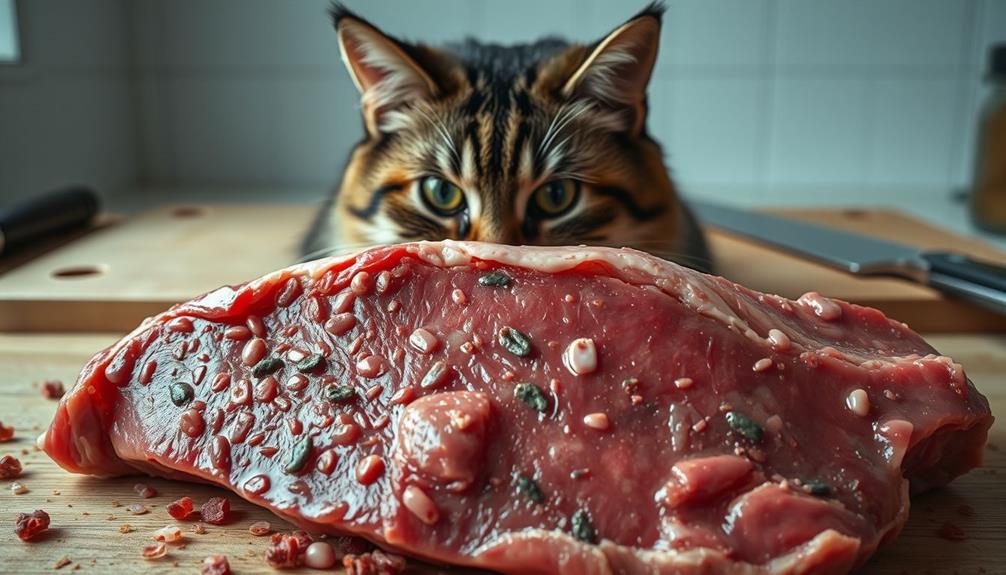
Feeding your cat a raw food diet can open the door to serious health risks, particularly due to pathogen contamination. Studies show that nearly 25% of raw cat food samples are contaminated with harmful bacteria, including Salmonella and Listeria.
These pathogens can pose significant risks not only to your cat but also to your household. Pets with emotional dysregulation, such as those with BPD dynamics in relationships, may also exhibit increased anxiety, making them more vulnerable to health issues.
Salmonella, for instance, causes around 1.2 million human infections each year, with cats often acting as asymptomatic carriers, increasing the chance of transmission to humans.
Listeria monocytogenes, another common threat in raw diets, leads to severe foodborne illnesses, contributing to approximately 1,600 cases and 260 deaths annually in the US. The risks escalate, especially in households with young children or immunocompromised individuals, as they're more vulnerable to these pathogens.
Improper preparation and handling raw food can exacerbate the risks of contamination, making it critical to understand the serious implications of a raw diet.
While your cat may enjoy the taste, the potential health hazards from contaminated raw cat food can lead to dire consequences for both your pet and your family.
Safe Handling Practices
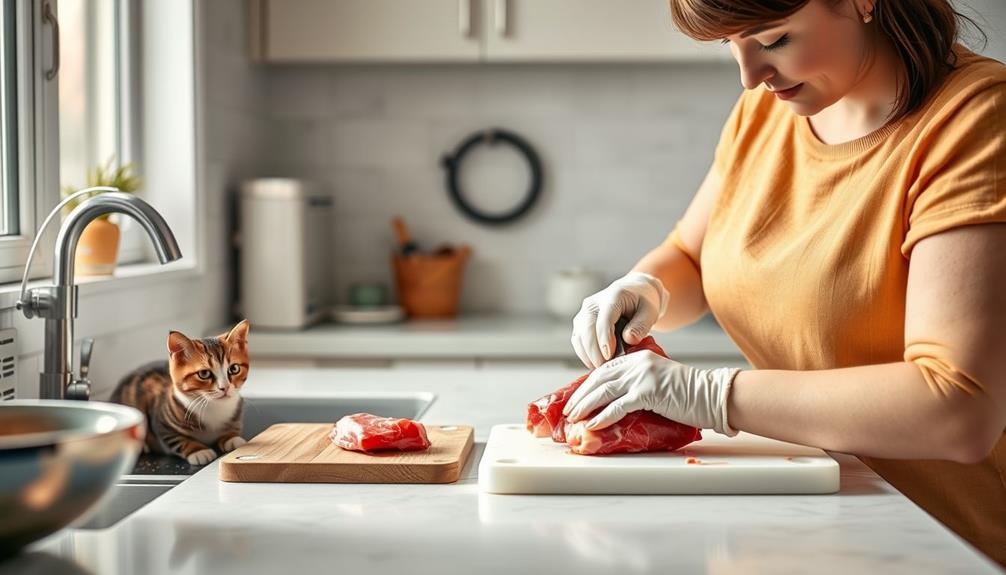
Practicing safe handling techniques is vital to minimize the risks associated with feeding your cat a raw food diet. As a pet parent, you need to be vigilant about harmful bacteria like Salmonella and Listeria that can thrive in raw cat food.
Regularly monitoring your cat's health for any signs of illness can also be beneficial, as certain dietary choices may impact their well-being, including ultimate hamster care. Always wash your hands thoroughly with soap and water after handling any raw food. This simple step helps prevent the spread of these pathogens.
To guarantee a safe environment, clean and disinfect all surfaces, utensils, and feeding dishes that come into contact with raw food. Remember to store raw cat food in the freezer until you're ready to use it, and thaw it safely in the refrigerator or microwave. This prevents bacterial growth and keeps your cat's nutritional needs in check.
Keep raw cat food separate from human food items during storage and preparation to avoid cross-contamination. It's also important to avoid rinsing raw meat before preparation, as this can cause splashing and spread bacteria to surrounding surfaces and utensils.
Alternatives to Raw Diets
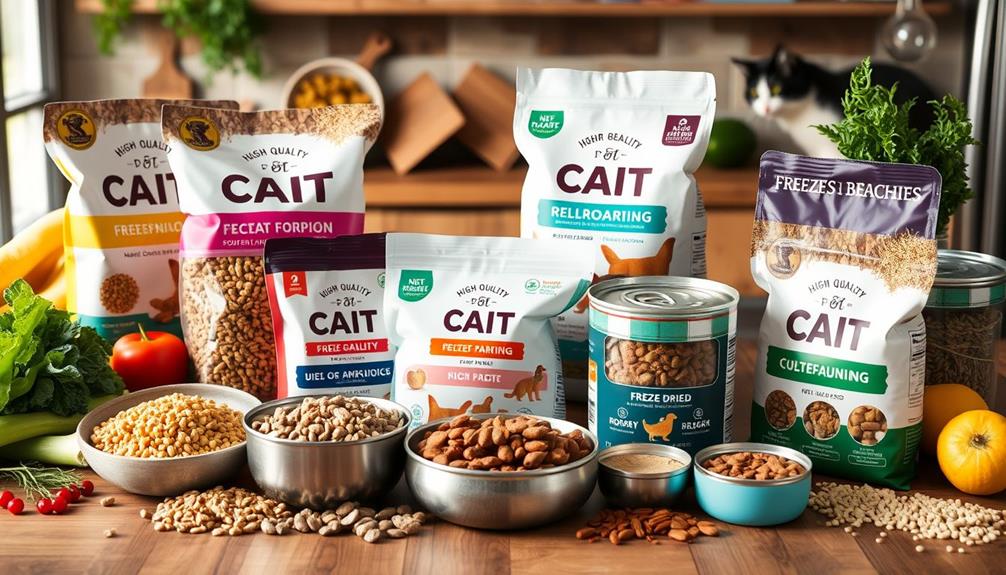
When considering alternatives to raw diets, many pet owners find themselves weighing the benefits of high-quality commercial foods. These commercially prepared options, formulated by veterinary nutritionists, provide a complete and balanced diet that meets your cat's nutritional needs without the risks associated with raw feeding.
Additionally, some commercial diets are specifically designed to support urinary health, which is essential for preventing common feline health issues recommendations for usage based on symptoms.
Cooked food is another excellent choice. It can be tailored to eliminate harmful bacteria, making it a safer alternative to raw diets. High-quality canned cat foods often have higher moisture content, supporting hydration and benefiting your cat's urinary health.
If your cat has food sensitivities or allergies, you might explore limited ingredient diets (LID) or hypoallergenic commercial foods. These options provide safe alternatives without the dangers linked to raw diets.
It's vital to consult with a veterinarian when making dietary changes. They can guide you in selecting high-quality commercial diets or cooked homemade meals that align with your cat's health needs.
Frequently Asked Questions
Why Is Raw Food Bad for Cats?
Raw food diets can expose your cat to harmful bacteria and nutritional deficiencies. They often lack essential nutrients, and unprocessed bones might cause serious injuries. It's best to stick to balanced, vet-recommended diets for your cat's health.
Why Do Vets Say Raw Food Is Bad?
Oh sure, let's serve your cat raw meat like a gourmet delicacy! Vets warn against it because of bacteria, nutrient deficiencies, and potential harm to both your pet and your family. Cooked food's safer, trust them!
Do Vets Recommend a Raw Diet for Cats?
Most vets don't recommend a raw diet for cats due to health risks like bacterial contamination and nutritional imbalances. They suggest opting for high-quality commercial cat foods to guarantee your pet's health and well-being.
What Are the Dangers of Raw Food?
Raw food diets can expose your cat to harmful bacteria like Salmonella and E. coli, leading to severe illness. They might also cause nutrient deficiencies and pose choking hazards from unprocessed bones, risking your cat's health. Additionally, raw food diets can lead to potential dental issues and digestive problems for cats. In fact, some studies have linked raw food diets to an increased risk of tooth decay and gum disease in cats. Furthermore, it’s important to note that raw food and dog constipation can also be a concern, as the lack of fiber in raw diets can lead to bowel irregularities and discomfort for pets. Therefore, it’s crucial to carefully consider the potential risks before deciding to switch your cat to a raw food diet.
Conclusion
In the grand tapestry of feline nutrition, raw food might seem like a tempting thread, but it can unravel quickly with health risks and nutritional concerns. While the allure of a raw diet is strong, remember the hidden dangers lurking within pathogens that can harm your cat. By exploring safer alternatives, you can guarantee your furry friend thrives. After all, a happy cat is a healthy cat, and that's the purrfect goal for every pet owner!
With her ability to convey complex concepts in a clear and accessible manner, Belinda ensures that readers of all backgrounds can grasp the benefits and techniques of raw food. She excels at breaking down scientific information into digestible pieces, allowing readers to understand the impact of raw food on their bodies and encouraging them to make informed choices about their diet.
One of Belinda’s notable contributions to rachaelsrawfood.com is her collection of mouthwatering recipes. She delights in experimenting with various combinations of raw ingredients, exploring innovative ways to create delicious and nutritious meals. Belinda’s recipes showcase the incredible flavors and textures of raw food and emphasize its versatility, dispelling any misconception that a raw food diet is limited or monotonous.
In addition to her writing responsibilities, Belinda actively engages with the raw food community, attending workshops, seminars, and conferences to expand her knowledge and network. She enjoys connecting with like-minded individuals, exchanging ideas, and staying up to date with the latest trends and advancements in the field of raw food nutrition.
Kitchen Essentials for Raw Food Preparation
Which Raw Food Should Be Stored Above? Essential Tips
Learn the crucial hierarchy of raw food storage to prevent cross-contamination and ensure safety—discover the essential tips that could change your kitchen practices!
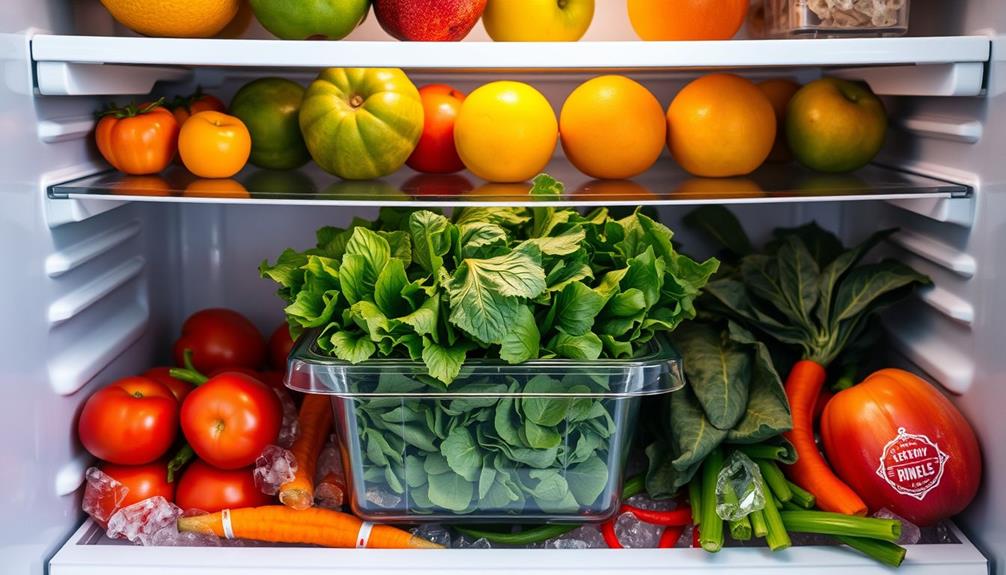
When organizing your refrigerator, always store raw fish on the top shelf. This placement minimizes the risk of cross-contamination with other foods. It's essential to wrap the fish tightly in plastic wrap or foil and keep it in a sealed container to prevent exposure to contaminants. Below the fish, you can store whole cuts of beef and pork on the middle shelf, while ground meats go lower. Finally, raw poultry should be on the bottom shelf to avoid any leakage. Understanding these storage tips can greatly enhance your food safety practices. You'll discover even more helpful advice ahead.
Key Takeaways
- Store raw fish on the top shelf to minimize the risk of cross-contamination with other foods.
- Whole cuts of beef and pork should be placed directly below fish on the middle shelf.
- Ground meats must be stored on the lower middle shelf, beneath whole cuts of beef and pork.
- Raw poultry should always be kept on the bottom shelf to prevent juices from contaminating other items.
- Use sealed containers for all raw foods to further reduce the risk of contamination.
Importance of Food Hierarchy
When it comes to food storage, understanding the importance of food hierarchy is vital for maintaining safety in your kitchen. By organizing your refrigerator correctly, you can minimize the risk of cross-contamination, which is essential for raw food safety. Proper food storage practices can help ward off foodborne illnesses, similar to how cold medications should be chosen for effective relief.
Start with seafood, which should always be stored on the top shelf. It's the most perishable and should be kept above other raw foods to prevent any juices from dripping down.
Next, place whole cuts of beef and pork on the middle shelf. This keeps them safely above ground meats and seafood, adhering to the food storage hierarchy. Ground meats and fish should be stored on the lower middle shelf, where they can be contained separately from poultry, which you must always put on the bottom shelf. This prevents any juices from raw poultry from contaminating other foods, markedly reducing cross-contamination risks.
Following this organization not only minimizes the chances of foodborne illnesses but also makes it easier to access your ingredients when cooking. By adhering to these guidelines, you guarantee that your kitchen remains safe and efficient while handling raw foods.
Storing Fish Correctly

When storing fish, it's vital to prioritize proper storage techniques to keep it fresh and safe.
You should always maintain the right temperature and take steps to prevent cross-contamination, especially with other raw foods.
Regular cleaning of storage areas is essential to guarantee hygiene and minimize the risk of foodborne illnesses.
Importance of Proper Storage
Storing fish correctly is essential for maintaining its freshness and guaranteeing food safety. To prevent contamination, always place fish on the top shelf of your refrigerator. This helps minimize the risk of juices leaking from raw meats or poultry stored below, which could spoil your fish.
Additionally, consider incorporating aquatic exercise into your routine, as it promotes overall health which is beneficial when handling and preparing food. Wrapping your fish tightly in plastic wrap or aluminum foil is important, as it prevents exposure to contaminants and helps maintain its quality.
Be certain to store fish in a sealed container, keeping it separate from raw meats and poultry. This extra layer of protection further reduces the risk of cross-contamination.
Regularly check the use-by dates on your fish to verify you're consuming it while it's still safe. Proper refrigeration is essential; keep your fish at or below 5 °C to inhibit harmful bacteria growth.
Temperature Control Guidelines
Maintaining the right temperature is essential for guaranteeing your fish stays fresh and safe to eat. Store your fish on the top shelf of the fridge to avoid cross-contamination with other raw foods like beef and pork. The ideal storage temperature for fish is below 5 °C, which helps minimize bacterial growth and keeps it fresh.
Here's a quick overview of proper fish storage:
| Storage Guidelines | Details |
|---|---|
| Ideal Temperature | Below 5 °C |
| Storage Location | Top shelf of the fridge |
| Wrap | Tightly in plastic wrap or aluminum foil |
| Below Fish | Whole cuts of beef and pork |
Always check the temperature of your fridge regularly to guarantee it stays at or below that critical level. Wrapping your fish tightly prevents exposure to contaminants, further maintaining its quality. Following these temperature control guidelines will help keep your fish safe and delicious for you and your family.
Cross-Contamination Prevention Strategies
To keep your fish safe from cross-contamination, always place it on the top shelf of your refrigerator. This prevents fish juices from dripping onto other raw foods, reducing the risk of spoilage and bacteria spreading.
Proper food handling and storage practices are fundamental to maintaining a safe kitchen environment, especially when it comes to preventing cross-contact with other raw ingredients.
Here are three fundamental strategies for storing fish correctly:
- Use a Sealed Container: Store your fish in a well-sealed container or tightly wrapped to minimize any leakage. This is critical in preventing cross-contamination with other foods.
- Separate Storage: Always keep fish separate from raw poultry and meats. These should be placed on the lower shelves to avoid any drips that could contaminate the fish.
- Monitor Temperature: Verify your refrigerator maintains a temperature of 5 °C or below. This is essential for temperature management and helps inhibit bacterial growth, keeping your fish fresh longer.
Regularly check your fish for signs of spoilage and consume or cook it within a safe timeframe.
Poultry Safety Practices
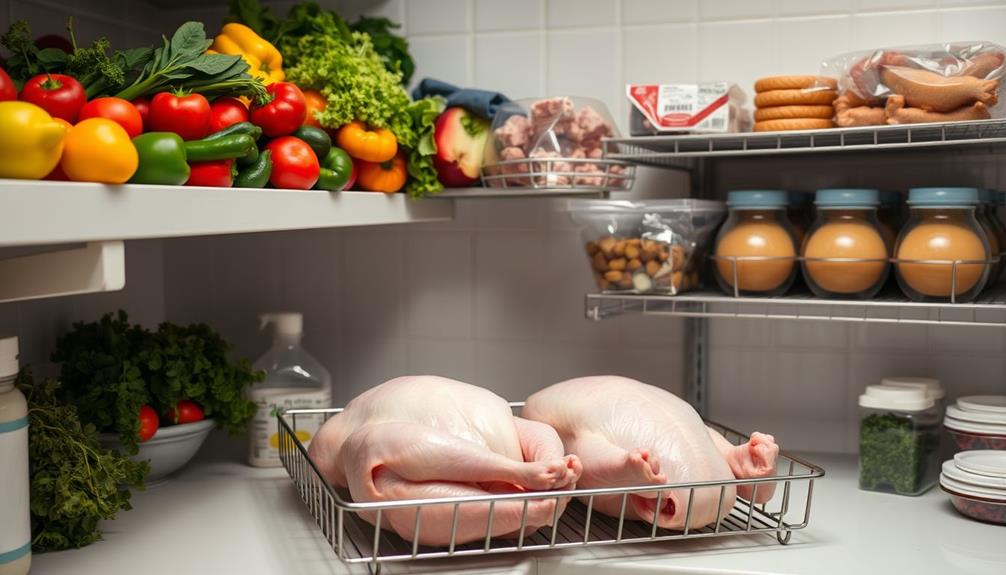
When it comes to poultry safety, proper storage is key to preventing foodborne illnesses. Always store raw poultry on the bottom shelf of your fridge to avoid cross-contamination, and make sure it's in a sealed container.
Additionally, understanding the importance of budgeting for food expenses can help you manage your grocery costs effectively.
Keeping poultry at safe cooking temperatures is just as important—let's explore how to do this effectively.
Proper Storage Hierarchy
Properly organizing your refrigerator is vital for poultry safety and overall food hygiene. Establishing a clear storage hierarchy helps prevent cross-contamination and guarantees your food stays safe.
For instance, keeping your raw meats properly stored can greatly reduce the risk of foodborne illnesses, as noted in hamster care and costs regarding proper food handling.
Here's how you can organize your raw foods effectively:
- Top Shelf: Store whole fish here. Keeping it above all other raw foods minimizes cross-contamination risks.
- Middle Shelf: Place whole cuts of beef and pork on this level, guaranteeing they're below fish but above ground meats. This organization helps maintain proper cooking temperature guidelines.
- Bottom Shelf: Raw poultry belongs here to prevent its juices from dripping onto other foods, especially ready-to-eat items located above.
Always wrap your raw foods securely in plastic wrap or aluminum foil to prevent leakage and contamination within the fridge.
By following this structured organization, you greatly reduce the chances of harmful bacteria spreading among your food.
Avoid Cross-Contamination Techniques
Cross-contamination is a serious concern in the kitchen, especially with raw poultry. To guarantee food safety, always store raw poultry on the bottom shelf of your refrigerator. This prevents its juices from dripping onto other foods, which can lead to harmful bacteria spreading. Use a sealed container or plastic bag to minimize any risk of leakage.
Early detection of foodborne illnesses can be vital, much like the importance of mammography for early detection in breast cancer.
It's essential to follow the food hierarchy; store raw poultry above raw meats and seafood. This simple step can considerably reduce the risk of cross-contamination. When preparing meals, always use separate cutting boards for raw poultry and other ingredients to avoid cross-contact of pathogens like Salmonella.
Maintaining proper refrigeration temperatures is vital, too—ideally below 5 °C. This inhibits the growth of harmful bacteria that can thrive in warmer environments. Regularly check your refrigerator to guarantee it's keeping the right temperatures.
Safe Cooking Temperatures
Cooking poultry safely is vital for preventing foodborne illnesses. To guarantee you're cooking your poultry properly, always check the internal temperature with a food thermometer. The safe cooking temperature for all poultry products, including whole birds and ground poultry, is 165°F (74°C).
It's essential to maintain a clean cooking environment and utilize proper food storage practices for peak safety, especially if you have pets that might introduce allergens into your home, as best vacuums for dust removal in 2024 can help eliminate any lingering particles.
Here are some key tips to follow:
- Store Raw Poultry: Always keep raw poultry on the bottom shelf of your fridge to prevent juices dripping onto other foods and causing cross-contamination.
- Thawing Methods: Thaw frozen poultry safely in the refrigerator, in cold water, or in the microwave. Avoid thawing at room temperature to minimize bacterial growth.
- Leftover Cooked Poultry: Refrigerate any leftover cooked poultry within two hours of cooking. Consume it within 3-4 days for peak food safety.
Managing Raw Meat Storage
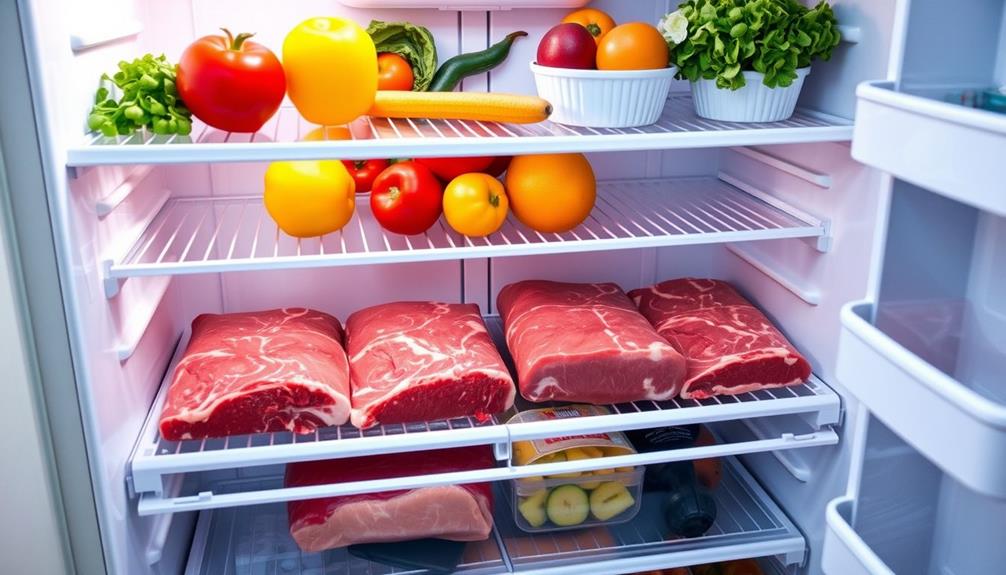
When it comes to managing raw meat storage, organization is key to ensuring food safety.
Start by storing fish on the top shelf of your refrigerator. This placement minimizes the risk of contamination with other raw foods.
It's also important to maintain a clean refrigerator environment to prevent any airborne bacteria from settling on surfaces, much like the air purifier maintenance dos and don'ts.
Below the fish, place whole cuts of beef and pork on the middle shelf. This arrangement prevents any drips that could potentially contaminate lower shelves.
Ground meats, including beef and pork, should occupy a lower shelf to reduce the risk of bacterial spread from their juices.
Preventing Cross-Contamination
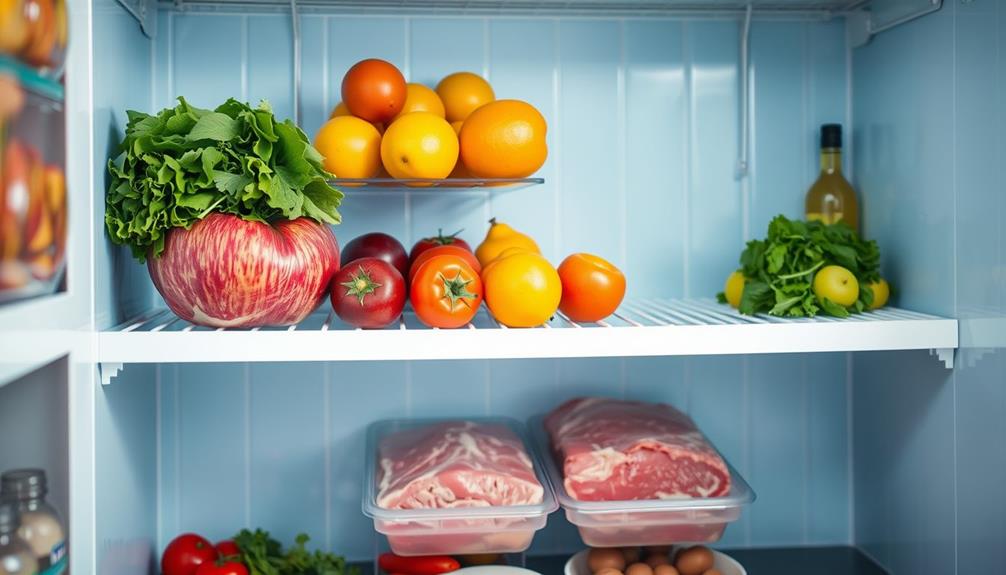
Maintaining a safe food environment means taking steps to prevent cross-contamination in your kitchen. To keep harmful bacteria at bay, you need to store raw foods correctly and guarantee that they're separate from cooked foods. Here are some essential tips to help you achieve that:
1. Store Raw Foods in Order: Always place fish at the top, followed by whole cuts of beef or pork, ground meats, and finally poultry at the bottom. This arrangement minimizes the risk of drips and leakage contaminating other items. Additionally, it’s important to store raw foods in sealed containers or leak-proof bags to further prevent cross-contamination. When storing raw foods in the refrigerator, always keep them separate from ready-to-eat items, and use different cutting boards and utensils for preparing raw meats and other foods. Following these raw food storage tips can help reduce the risk of foodborne illness and keep your kitchen safe.
Additionally, just as proper maintenance is vital for heat pumps to function effectively, maintaining proper food storage practices is fundamental for food safety.
2. Use Sealed Containers: Keep raw foods in sealed containers or plastic bags. This greatly reduces the chances of leakage, which can spread harmful bacteria and lead to foodborne illnesses.
Using sealed containers is similar to how energy-saving features in heat pumps help minimize inefficiencies and enhance performance.
3. Organize Food Storage: Regularly check and organize your food storage. Confirm that cooked foods are always stored above raw items to maintain that vital separation.
Food Safety Guidelines
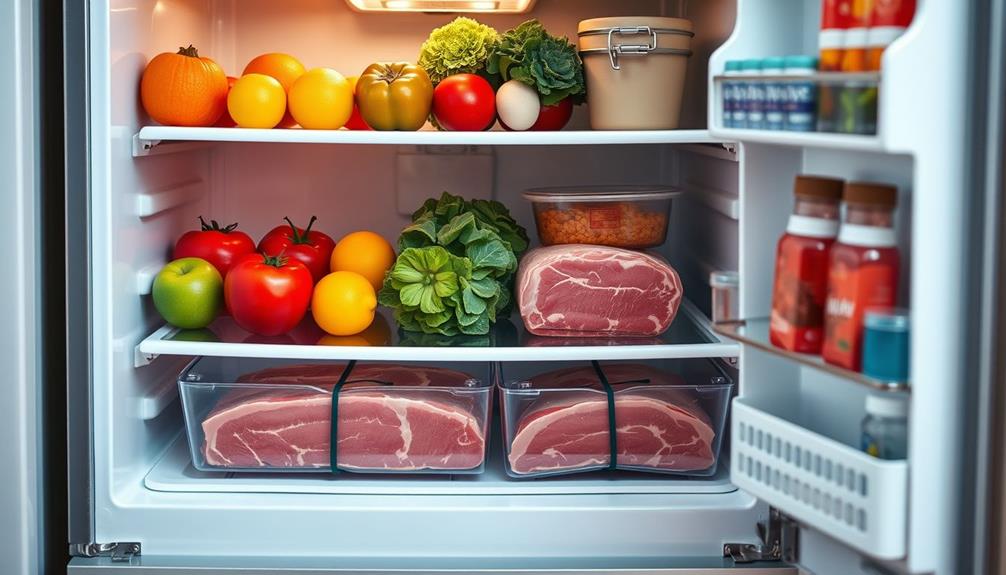
Food safety guidelines are essential for guaranteeing that your raw ingredients remain safe to eat and won't lead to foodborne illnesses. To maintain a safe storage hierarchy, place raw fish at the top of your refrigerator. This minimizes the risk of cross-contamination from its juices.
Additionally, understanding the importance of proper food handling can greatly reduce health risks associated with foodborne pathogens, similar to the ways caregivers manage financial considerations for elderly care to guarantee safety and well-being.
Below the fish, store whole cuts of beef and pork, which are less likely to harbor harmful bacteria compared to ground meats. Ground meats, like ground beef and pork, should be stored beneath whole cuts to prevent bacterial spread.
Finally, keep raw poultry—such as whole and ground chicken—on the bottom shelf, as it poses the highest risk of carrying pathogens like salmonella.
Always wrap your raw foods securely in aluminum foil or plastic wrap. This prevents exposure to contaminants and avoids any leakage that could affect other foods in your fridge.
Best Storage Containers
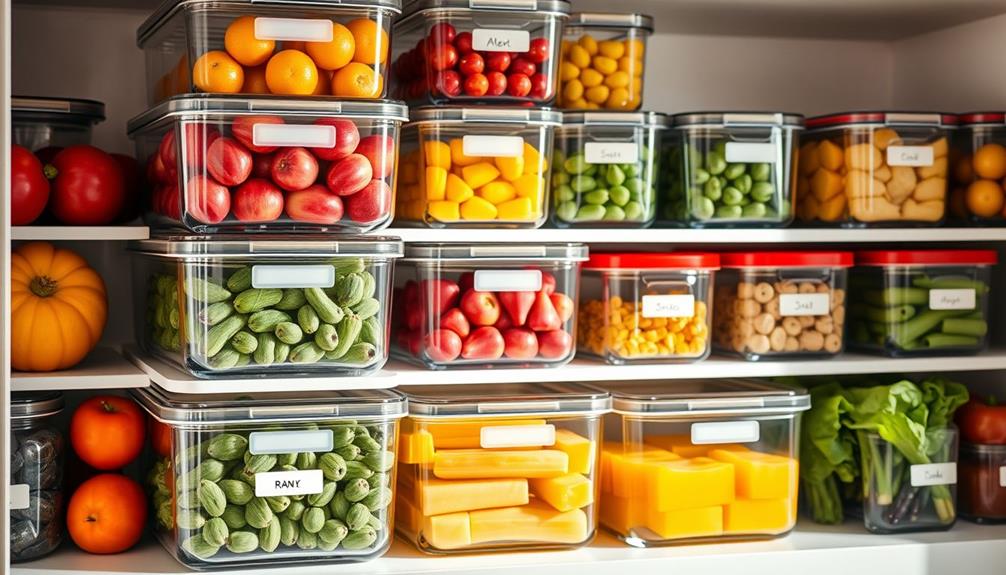
Choosing the right storage containers can make a big difference in keeping your raw foods safe and fresh. To effectively prevent cross-contamination and maintain the quality of your ingredients, consider these tips:
- Use airtight containers: Opt for glass or BPA-free plastic containers with tight-fitting lids. They not only prevent leaks but also keep odors from mingling and help maintain freshness.
- Label everything: Clearly label your storage containers with the contents and date of storage. This practice guarantees you track use-by dates and minimizes the risk of using spoiled food.
- Create visual distinction: Utilize separate colored containers for different food groups like raw meat, poultry, and seafood. This method aids in easily identifying contents and greatly reduces cross-contamination risks.
For freezer use, choose thicker food storage bags designed for that purpose. They're less likely to puncture or leak, guaranteeing your raw foods stay safe.
Frequently Asked Questions
Which Raw Food Should Be Stored Above?
When storing raw foods, you should place whole fish on the top shelf. This helps reduce cross-contamination risks. Remember to wrap them securely to prevent any leaks that could affect other items below.
Which Food Should Be Stored Above?
Imagine the chaos of a kitchen gone wrong. You should store fish on the top shelf to prevent cross-contamination. It's essential for maintaining safety, ensuring your meals are delicious and free from any harmful bacteria.
Which Food Should Be Stored Above Others in the Refrigerator?
When storing food in your refrigerator, always place fish on the top shelf. It minimizes cross-contamination risks. Below that, keep whole cuts of beef and pork, followed by ground meats and poultry on the bottom.
What Is the Proper Way of Storing Raw Food?
Imagine your fridge as a well-organized library. When storing raw food, wrap it tightly, use sealed containers, and arrange by type. This keeps everything fresh and prevents contamination, just like protecting valuable books from damage.
Conclusion
By understanding the importance of food hierarchy and proper storage techniques, you can keep your kitchen safe and your meals delicious. Just like stacking building blocks, each layer of food needs to be placed thoughtfully to prevent disaster. Remember to store fish above poultry, and always keep raw meat at the bottom. With these tips, you'll guarantee freshness while protecting your loved ones from cross-contamination. Your kitchen can be a safe haven for healthy eating!
Rachael, the Editor in Chief of RachaelsRawFood.com, is an inspiring and passionate individual who has dedicated her life to promoting the benefits of a raw food lifestyle. Known for her vibrant and energetic personality, Rachael has built a strong online presence that has transformed her personal journey into a thriving community of raw food enthusiasts.
-
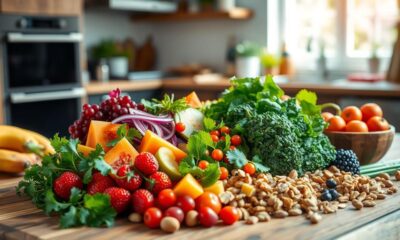
 Health and Wellness2 months ago
Health and Wellness2 months agoDoes Eating Raw Food Help You Lose Weight? Discover the Truth
-

 Raw Food Recipes2 months ago
Raw Food Recipes2 months agoHow Much Raw Food to Feed Your Puppy: Essential Tips
-

 Kitchen Essentials for Raw Food Preparation1 month ago
Kitchen Essentials for Raw Food Preparation1 month agoCan You Cook Raw Food in an Air Fryer? Discover the Possibilities
-

 Raw Food Recipes2 months ago
Raw Food Recipes2 months agoHow to Defrost Dog Raw Food Properly
-

 Health and Wellness2 months ago
Health and Wellness2 months agoHow Long Does It Take Bacteria to Spread From Raw Food? Essential Info
-
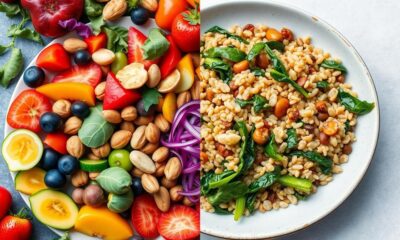
 Raw Food Recipes2 months ago
Raw Food Recipes2 months agoRaw Food Vs. Vegan: Which Diet Is Better?
-

 Raw Food Recipes2 months ago
Raw Food Recipes2 months agoIs Raw Food Good for Cats? Find Out Here
-
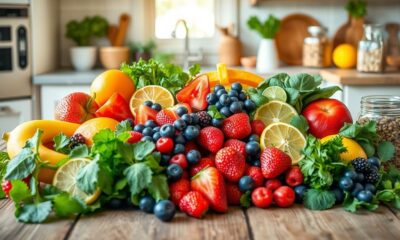
 Raw Food Recipes2 months ago
Raw Food Recipes2 months agoWhat Is the Raw Food Diet? A Comprehensive Overview



